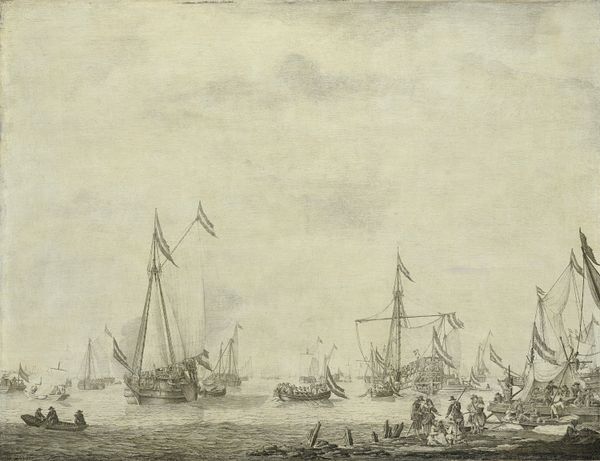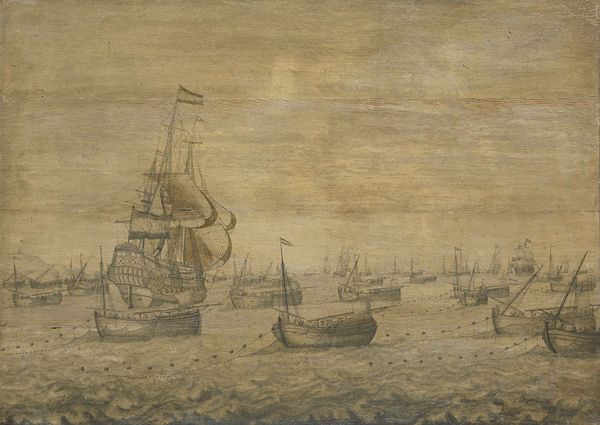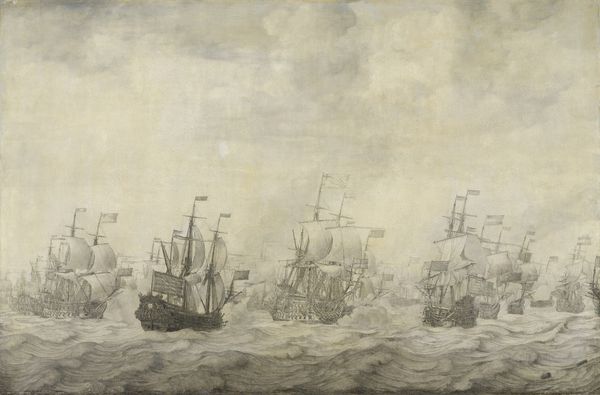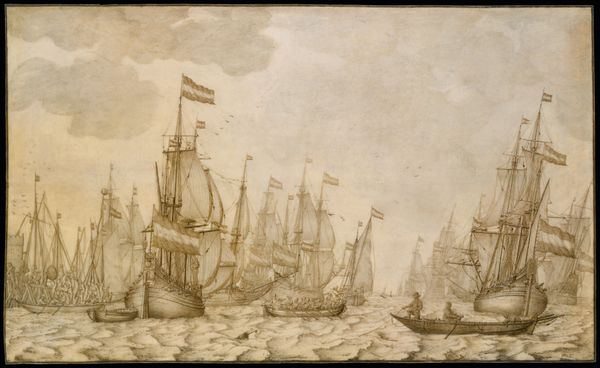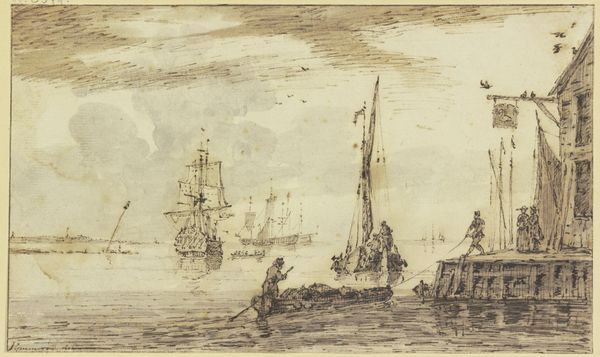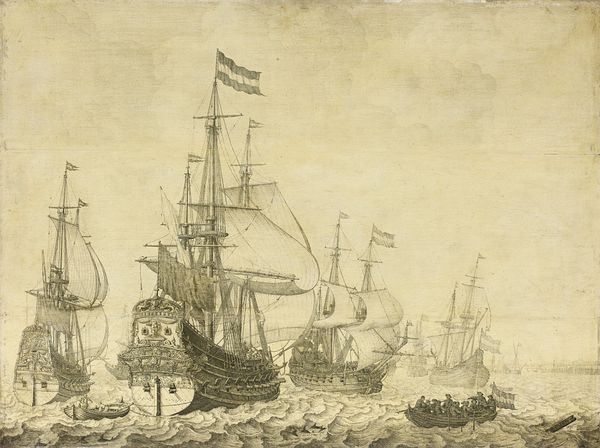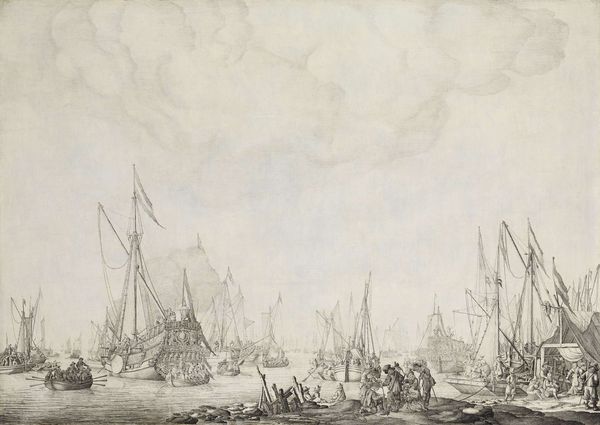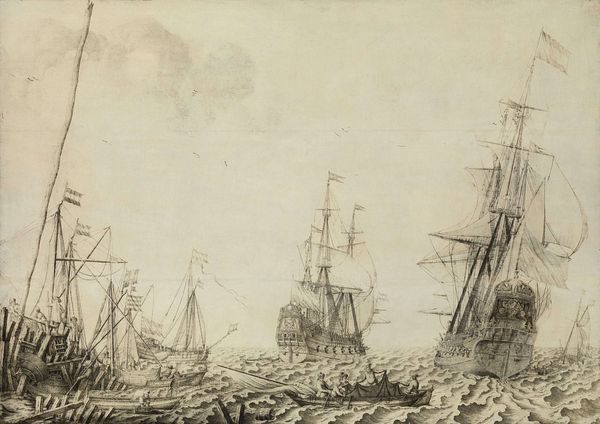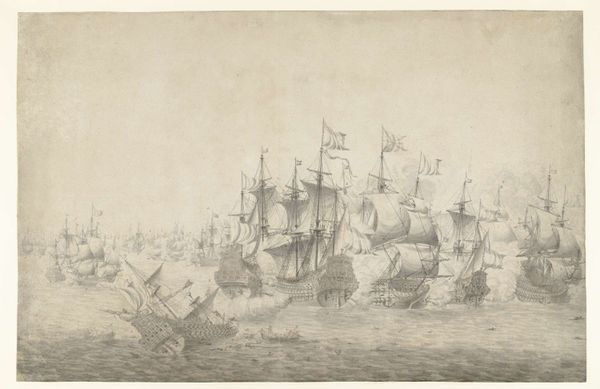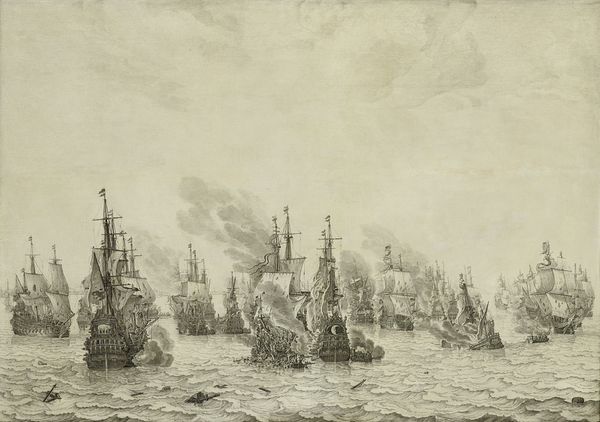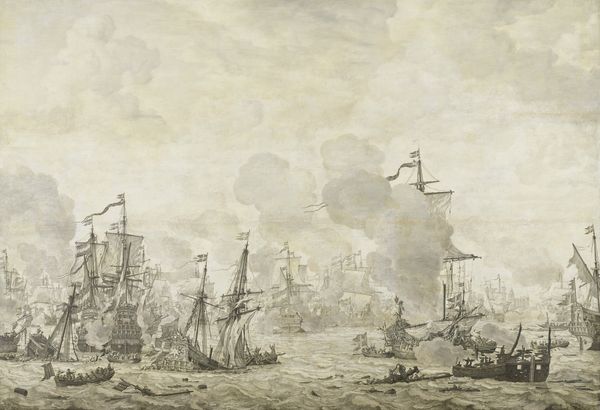
Battle between the Dutch and Swedish Fleets, in the Sound, 8 November 1658 1658 - 1693
0:00
0:00
willemvandeveldei
Rijksmuseum
drawing, paper, ink
#
drawing
#
baroque
#
landscape
#
charcoal drawing
#
paper
#
ink
#
history-painting
#
watercolor
Dimensions: height 100 cm, width 142 cm, depth 8.5 cm
Copyright: Rijks Museum: Open Domain
Editor: This is Willem van de Velde the Elder's "Battle between the Dutch and Swedish Fleets, in the Sound, 8 November 1658," created between 1658 and 1693, currently held at the Rijksmuseum. It's a drawing, done in ink, charcoal, and watercolor on paper, and strikes me as incredibly detailed, chaotic even. What stands out to you about it? Curator: The sheer scale of the labor involved in creating this work, and the conditions under which van de Velde operated, is really compelling. He wasn’t just an artist; he was embedded within the maritime culture of the time. Think of the production of paper and ink itself. Do you consider it impacting his production in terms of technique, style or creative choices? Editor: That’s a good point. The materials themselves dictated the possibilities, right? The constraints of working on paper with ink and charcoal must have required a certain kind of precision and planning. So, beyond the physical constraints of the materials, how do you see the social context influencing this piece? Curator: Precisely! This drawing documents a specific historical event, but it’s also a product of a society deeply invested in maritime power. Van de Velde was essentially commissioned to create these images, so they functioned as both historical records and tools for shaping public perception of naval conflicts. Consider the consumption of such images by the Dutch public. Did it serve a purely documentary purpose or a more propagandistic one? Editor: I suppose it's both. There's the factual representation of the battle, but also the implicit celebration of Dutch naval strength. Curator: Exactly. By focusing on the materials, production, and consumption of this drawing, we get a richer understanding of its cultural significance beyond just aesthetic appreciation. It brings art and craft closer. Editor: That definitely gives me a new perspective, seeing it as more than just a picture, but also as a product of its time and place. Curator: Indeed, and recognizing the labor and resources embedded in even a seemingly simple drawing, encourages a broader engagement with art history.
Comments
No comments
Be the first to comment and join the conversation on the ultimate creative platform.
